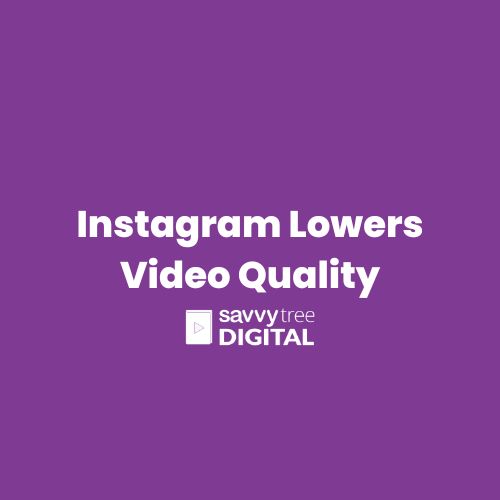In a move that has sparked discussions among users and industry experts alike, Instagram has recently implemented a new strategy that involves reducing the video quality for posts that receive fewer views. This decision, while seemingly technical, has significant implications for content creators and the overall user experience on the platform.
Understanding the Rationale
Instagram, like many other social media platforms, is constantly evolving to optimize its infrastructure and user experience. In an effort to manage the ever-increasing volume of video content uploaded daily, the platform has introduced a tiered approach to video quality.
The core idea behind this strategy is to prioritize high-quality video delivery for posts that are generating significant engagement. By allocating more bandwidth and processing power to popular content, Instagram aims to ensure a smooth and visually appealing experience for its users.
However, this prioritization comes at a cost. Less popular videos, those that aren’t garnering as many views or likes, may experience a noticeable decrease in video quality. This can manifest in various ways, such as lower resolution, reduced frame rates, or increased compression artifacts.
Impact on Content Creators
For content creators, this change poses a unique set of challenges. While the platform’s goal is to enhance the overall user experience, it can inadvertently diminish the value of their hard work. Lower-quality videos may not only look less professional but could also hinder engagement, as viewers may be less inclined to watch content that appears pixelated or blurry.
To mitigate these issues, content creators may need to adapt their strategies. Some potential approaches include:
- Prioritizing Platform Consistency: By focusing on platforms that consistently deliver high-quality video, creators can ensure that their content is presented in the best possible light.
- Leveraging Alternative Video Platforms: Exploring other platforms, such as YouTube or TikTok, which often prioritize video quality, can provide a more suitable outlet for creators to share their work.
- Optimizing Video Content: By compressing videos without sacrificing quality, creators can reduce file sizes and improve upload and playback speeds.
- Engaging with the Instagram Community: Providing feedback and suggestions to Instagram can help the platform understand the impact of these changes and potentially adjust its policies.
The Broader Implications
Beyond its impact on content creators, Instagram’s decision to prioritize video quality for popular content raises broader questions about the future of social media. As platforms increasingly rely on algorithms to curate content, there is a risk of creating echo chambers where only the most popular content is amplified. This can stifle diversity of thought and limit the opportunities for emerging creators.
It’s crucial for social media platforms to strike a balance between optimizing their infrastructure and fostering a vibrant, inclusive community. By prioritizing quality for all content, regardless of popularity, platforms can ensure that every user has an equal opportunity to share their stories and connect with others.
Conclusion
While Instagram’s decision to prioritize video quality for popular content is understandable, it’s essential to consider the potential consequences for content creators and the overall user experience. By understanding the factors driving this change and implementing effective strategies, both creators and users can navigate this new landscape and continue to enjoy the platform.

